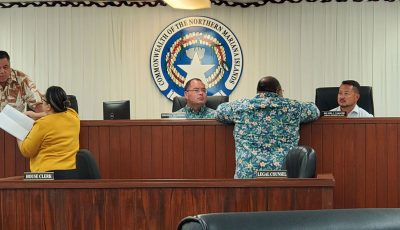Flashback – July 2000-July 2002
July 25, 2000
Bill seeking toxic compensation OK’d in House
To provide island residents the means to seek compensation for injuries and loss as a result of exposure to toxic substances, the House of Representatives has approved legislation establishing the legal framework if and when such situation occurs. If HB 12-177, otherwise known as the Toxic Substances Exposure Compensation Act, becomes a law, it will be a public policy of the CNMI to grant rights to the victims for compensation and other relief. Offered by House Natural Resources Committee chair Rep. Dino M. Jones, the measure is an offshoot to the planned lawsuit against federal agencies and manufacturers of the polychlorinated biphenyl, which has contaminated the coastal village of Tanapag over the last three decades.
DPS taps fed funds to acquire 6 motorcycles
The Department of Public Safety has tapped the U.S. Highway Safety Funds in acquiring six motorcycles for the traffic enforcement section, according to Maj. Clyde Norita, assistant chief of the Office for Special Services. With the increasing number of vehicles on the island, Mr. Norita said the department believes that the motorcycles can respond faster to emergencies than patrol cars. Each motorcycle cost $15,000 while the patrol cars equipped with light and sirens cost $25,000. DPS has sent Police Officer Eric Mafnas to the U.S. mainland for training on the use of motorcycles. He is now holding the 80-hour training for other traffic officers to become certified motorcycle operators.
July 25, 2001
Atalig tops list of senators with most number of bills
Three regular sessions and two special sessions later, Sen. Ricardo S. Atalig is proving to be the most prolific among the nine senators of the 12th CNMI Legislature. With 31 bills filed to date, Atalig tops the list among upper chamber lawmakers in the number of measures he has filed. He is followed by Sen. Pete P. Reyes, with 20. Sen. Edward U. Maratita comes in at third, with 16 measures. Based on the records obtained at the Senate, a total of 122 bills have been filed since the start of the 12th Legislature in January 2000.
$1M released to pay off-island referral billings
The Northern Mariana Islands Retirement Fund has decided to go ahead with its plan to loan $1 million to the Group Health and Life Insurance as seed money for a trust fund that would be used to pay for off-island medical referral billings. The Fund’s Board of Trustees agreed to go ahead with the $1-million loan, subject to the approval of the Legislature, during Friday’s board meeting at the conference room of the Tinian Casino and Gaming Control Commission on Tinian Island. Fund administrator Juan S. Torres said the money will be used to set up a trust fund in connection with the Fund’s decision to hire the services of the Hawaii Pacific Medical Referrals Inc.
July 25, 2002
CUC-CDA settlement bills hit snag
The two bills that would lay the groundwork for the settlement of the $102-million loan of the Commonwealth Utilities Corp. with the Commonwealth Development Authority have hit a minor snag. Apparently, indecisive language that puts a question whether CDA would actually waive all interests on the loan has made lawyers of the utility firm antsy, prompting them to write to the Senate that they do not agree with some provisions of the pending measures. House Bills 13-106 and 13-107, which fulfill the legislative requirement authorizing the settlement agreement between the CDA and the CUC, remains pending at the Senate.
DLNR: Fishkill worst in 7 years
The fishkill at the Smiling Cove Marina that followed the onslaught of Typhoon Chata’an left at least 26 kinds of marine life dead the worst in the last seven years. This was the findings of the Department of Lands and Natural Resources, as it blamed non-point source runoff as the possible cause of the fishkill. “This type of event has occurred nearly consistently following every major storm event that passed Saipan in the last seven years. Observations indicate that this recent event has produced the most significant fish and invertebrate kill in terms of diversity, and possibly in terms of numbers also, although neither diversity nor numbers of fish killed from such events has been rigorously documented over the years,” the DLNR said.



























